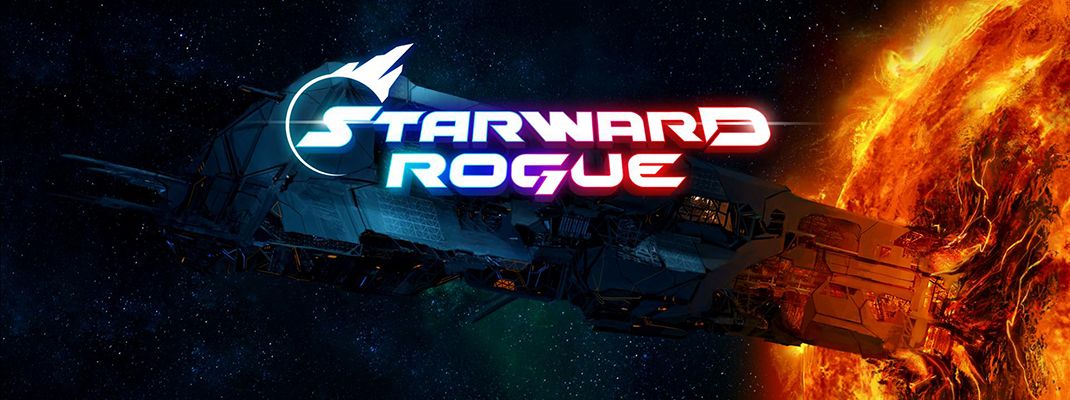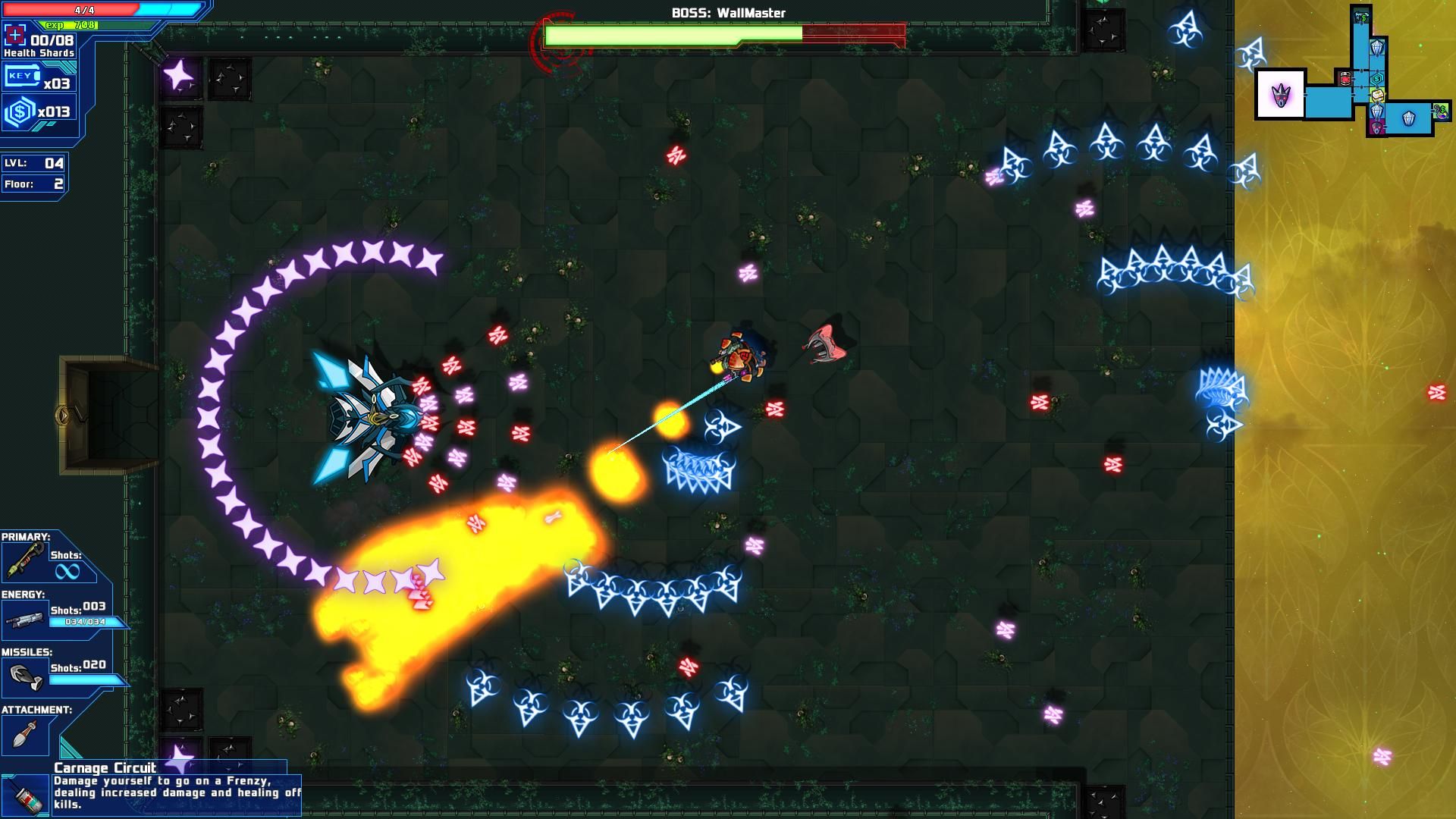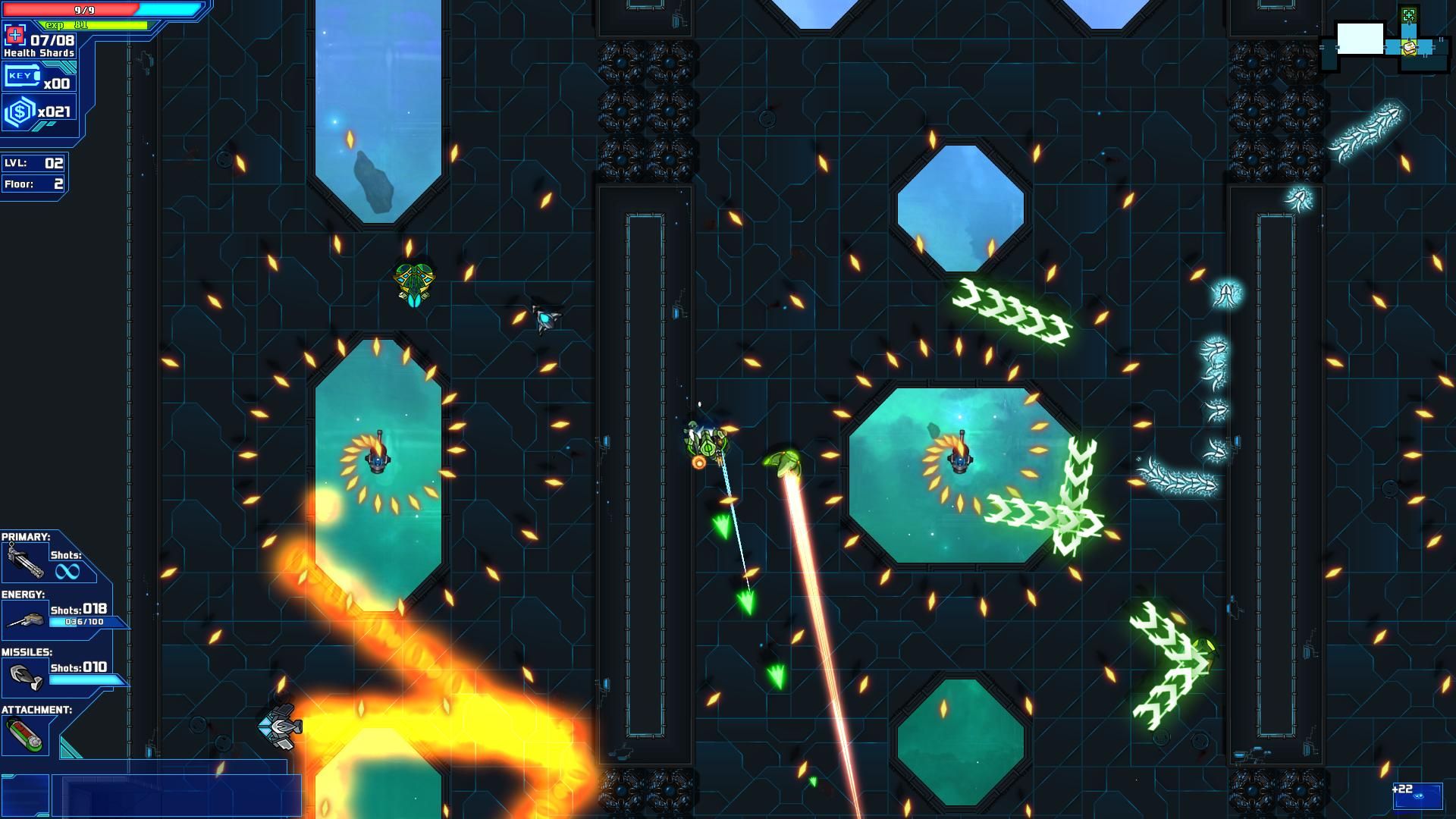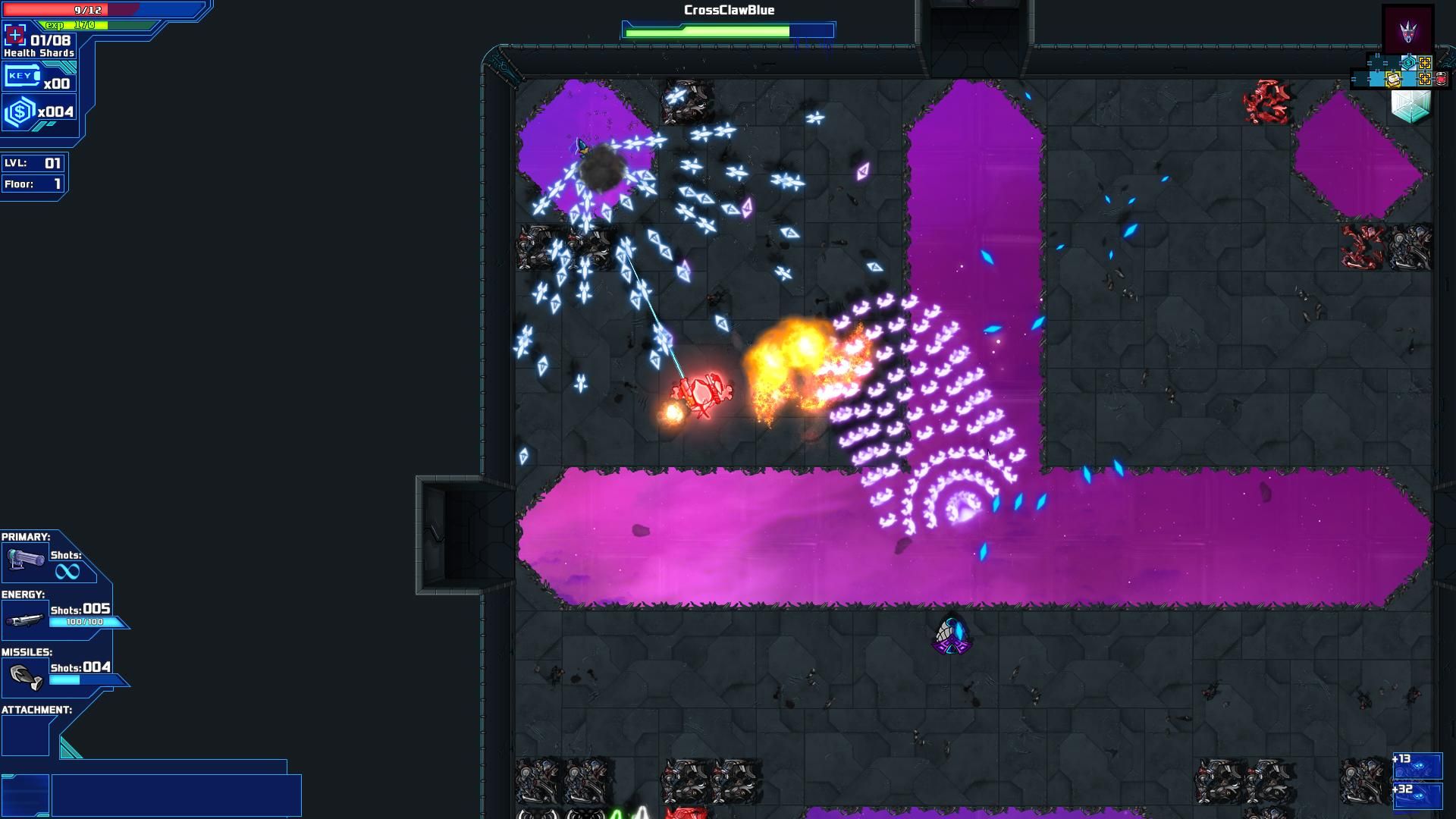As the old adage goes in regards to real estate, "location, location, location!" A giant tower jutting from the surface of the sun doesn't seem like prime real estate, so maybe that's why the AI Rodney is trying to escape. Whatever has imprisoned it there knew what it was doing, though, because while escaping from a robot-infested tower is hard enough, what can you do against a sun? It's a giant ball of superheated plasma and twisting magnetic fields burning at ten thousand degrees on the surface, spewing radiation strong enough that even 93,000,000 miles away and with a significant percentage absorbed by atmosphere it can still be deadly without proper protection. It's hard to imagine a location more secure to the point of complete overkill.
That's outside the prison, though. Inside the roguelike twin-stick arcade shooter dungeons of Starward Rogue it's a different story, seeing as a head-in-a-robot can blast its way down through the floors to take on the Warden. Each run is one of your limitless number of heads plunked into a mech of your choice, from a selection of six, and you'll need to shoot your way to the bottom floor to make a little more progress in freeing Rodney. Each of the different mech bodies works differently, from normal shoot-and-destroy models to those with unique but tricky abilities that need to be mastered before you can make any real distance. Each mech comes with a main gun, a secondary energy weapon, missiles, and a sprint. Having a mech with a fast gun and spread-shot energy weapon makes for an easier run than using the model with a slower gun but whose energy weapon lays down a bullet-repelling barrier and missiles that strongly attract all the firepower. For a real challenge there's even a mech that has low health, takes extra damage, but does the SuperHot thing where time only moves when you do. Each mech is balanced for a certain play style, and switching between a couple favorites is a great way to make each run to the dungeon depths play differently.
Of course, the mech you start with isn't guaranteed to be anything like the one that finishes, thanks to a power-up system that sees stats and abilities fluctuating throughout each run. Finding eight health shards (on Normal difficulty) earns a permanent 1HP health boost, but Sacrifice Rooms let you spend health on permanent upgrades such as bullets with a slight homing ability, energy for the secondary weapon when defeating enemies, and other incredibly helpful perks. Power-ups are available in both Sacrifice Rooms and regular shops, and while the best abilities cost health there are nice ones you can find for cold, hard cash. New guns and energy weapons show up on a regular basis, sometimes for sale and others lying there for free, and helper-bots do a nice job providing backup and blocking enemy fire. Ability perks can be a trickier decision, though, like trading bullets per second for damage, or losing missile capacity for a health boost. Every stat is fair game to be adjusted up or down, and while most power-ups have a net benefit, is it really worth making the slow-firing rail gun shoot even less frequently for a massive damage bonus? If you're an incredibly accurate shooter then sure, absolutely, but for those of us who like to spray the room in deadly fans of bullets it might not be worth the trade-off.
All of which, it has to be admitted, is much like the systems in Binding of Isaac. Starward Rogue has a touch of bullet hell spiraling through its BoI DNA, and superficially similar even though all the religion and poop has been replaced with robots. Run through the levels, find stat and ability-enhancing powerups, fight each floor's major boss and a selection of mini-bosses on the way there, and start all over again from scratch if you die. The basics of the genre have been refined to near-standardization since BoI kicked it off, but what Starward Rogue gets right is how fantastically well it runs through the basics while putting its own stamp on the genre.
Take the teleporter pads, for example. These are just little squares that pop your mech to another pad elsewhere in the same room. Some pads are necessary to get to sections of the room blocked off by walls, but others are simply to make it quicker to navigate the maze when backtracking. If you've got a giant twisty room full of hazards that have been deactivated after the enemies are cleared out, why run through it all rather than just pop from one door to the next? Maybe you've collected enough cash to buy a power-up in the store. Maybe you've finally got enough hit points to justify spending a few for a special ability in the Sacrifice Room. It might even be something as simple as being at a dead end of the labyrinth (which always has a store or other power-up to make the trip worthwhile) and not needing to trudge through a path of a dozen mostly harmless rooms to get back to the action. It's attention to the little details that can make a good game great.
The other aspect expanding Starward Rogue's lifespan is its community involvement. The game is made to be cracked open and played with, letting you tweak its settings and create new content, and these get regularly incorporated into official game updates. New enemies, bosses, and room layouts have all been added in a string of updates since the game's launch, and if the updates aren't quite so numerous as they were before Arcen ran into financial issues they're still frequent enough to make the game highly replayable. There's nothing quite like finding a new common enemy that shoots laser-boomerangs, or explodes in giant concentric rings of suicide bullets, to give new life to a familiar setting.
Admitted, constant content updates bring with it the risk of new bugs, such as a current one where a helper bot is overpowered or another where Sacrifice Shop items cost more than they say. The regular update cycle squashes them relatively quickly, and the momentary inconvenience is worth it for all the new toys, but it is something to take into consideration. The other potential problem is that the story that drives the action doesn't have any real ending, and whatever Rodney is supposed to be, deep in the tower depths, will likely remain a mystery due to updates being more about content than game lore. There's no question that each run through is a great challenge that's incredibly fun to tackle, but the story behind Starward Rogue's development meant that most of the focus went to gameplay with just a little left over to start the plot, and completing a run earns little more than a screen that might as well say "Congratulation! A Winner is You!"
Closing Comments:
Starward Rogue is easily the best arcade roguelike since Binding of Isaac: Rebirth and while it doesn't stray too far from its inspiration's influence, it makes up for this by executing its formula incredibly well. The large number of rooms, enemies, attack patterns, bosses and items make each run unique, and beating the Warden on floor 5 once simply means it will have tougher attack patterns the next time you reach him. Beat him enough and each run expands to seven floors with a second end boss, plus new items and powerups get added with each successful run. Rodney is calling from the tower depths, new updates are adding more ways to get killed trying to reach him on a weekly basis and as intense as the bullet patterns can be they only get crazier on the harder difficulties. Whatever Rodney might have turned out to be, blasting through Starward Rogue's dungeons while scavenging every power-up and ability that comes your way amidst the crushing pressure of enemy firepower makes for some of the best arcade roguelike action available.




